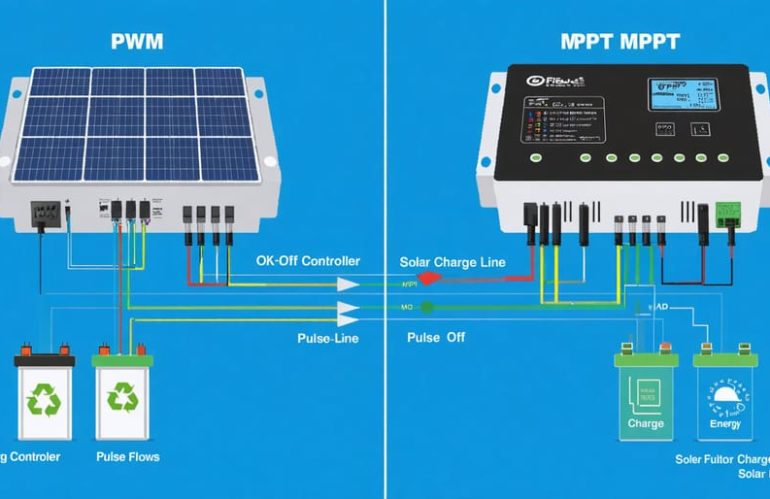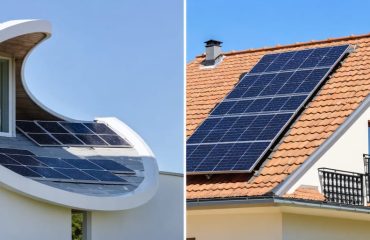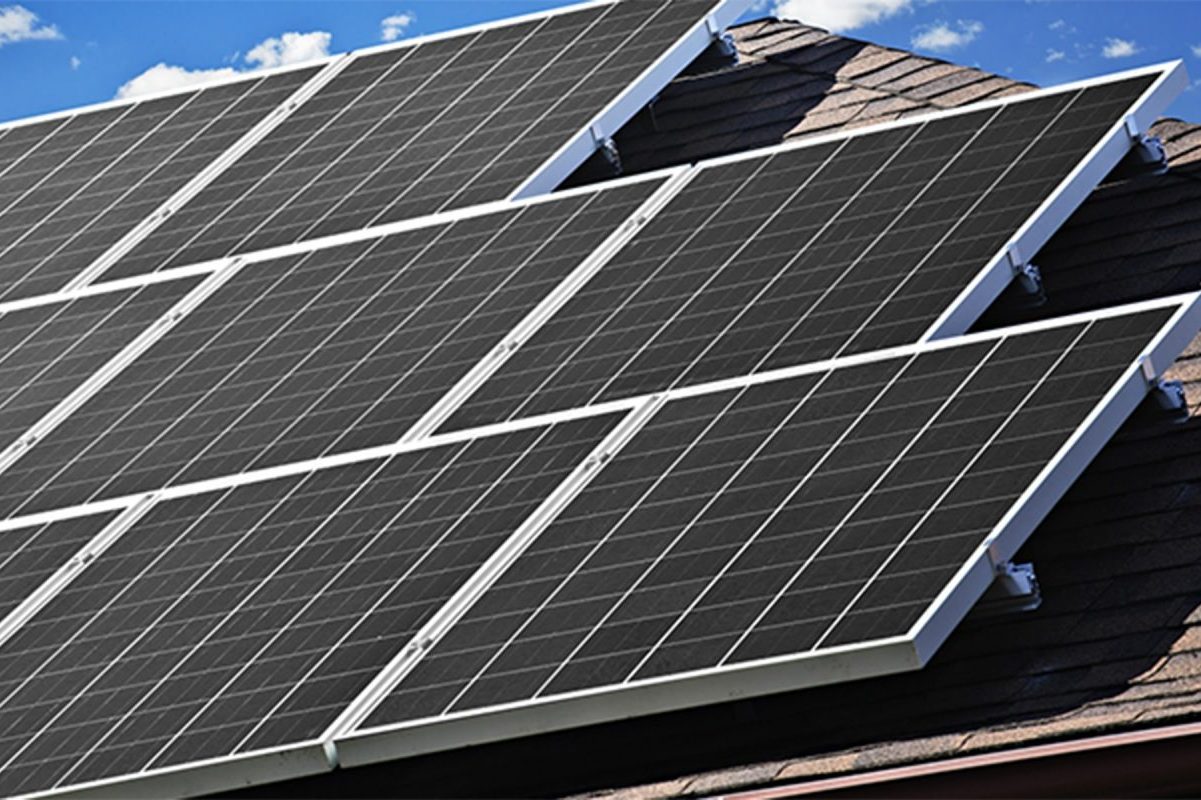Choosing between PWM and MPPT solar charge controllers can significantly impact your solar system’s efficiency and your energy savings. While both technologies regulate voltage between solar panels and batteries, MPPT (Maximum Power Point Tracking) controllers typically deliver 20-30% more charging power than PWM (Pulse Width Modulation) alternatives. For most modern home solar installations, MPPT controllers represent the gold standard, converting excess voltage into additional charging current rather than simply reducing it like PWM controllers do. However, PWM controllers still offer a cost-effective solution for smaller systems operating in consistent, sunny conditions where panels and batteries are perfectly matched. Understanding these crucial differences helps homeowners make an informed decision that balances initial investment against long-term energy harvest potential, ultimately determining the return on their solar investment.
Understanding Solar Charge Controllers
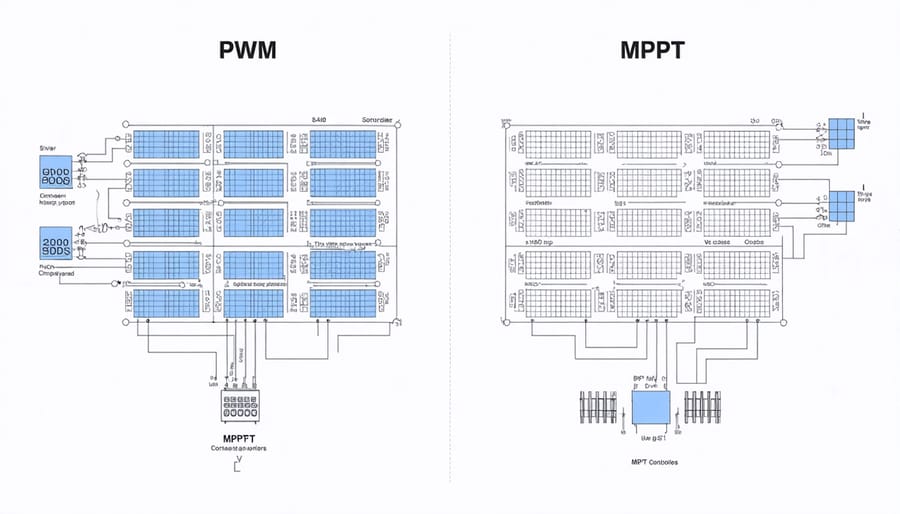
How PWM Controllers Work
PWM (Pulse Width Modulation) controllers work like a rapid on-off switch for your solar panels. Think of them as a smart dimmer switch that regulates the flow of power from your solar panels to your batteries. When your batteries need charging, the controller allows full power to flow through. As the batteries approach full charge, the controller rapidly switches the power on and off to reduce the charging rate.
This switching happens thousands of times per second, creating pulses of power that maintain your batteries at their optimal voltage. It’s similar to how a water tap can be adjusted to control flow – except PWM controllers do this electronically with electricity.
While simple and reliable, PWM controllers have one limitation: they need to match the panel voltage closely with the battery voltage. This means they typically work best with smaller systems where the solar panel voltage is already close to the battery voltage. For example, a 12V battery system works well with a 12V solar panel setup through a PWM controller.
Despite their limitations, PWM controllers remain popular for their affordability and dependability in basic solar setups.
How MPPT Controllers Work
MPPT (Maximum Power Point Tracking) controllers work like smart power optimizers for your solar system. They continuously analyze and adjust the voltage coming from your solar panels to match your battery’s needs, ensuring you get the most power possible from your setup.
Think of an MPPT controller as a skilled translator between your panels and batteries. When sunlight hits your panels, they produce varying amounts of voltage and current. The MPPT controller quickly finds the sweet spot – called the maximum power point – where voltage and current combine to deliver the highest possible power output.
This technology is particularly valuable in challenging conditions, like partially shaded panels or cold weather. MPPT controllers can extract up to 30% more power from your panels compared to simpler controllers. They’re especially effective with higher voltage panels and larger systems, making them ideal for home installations where maximum efficiency is crucial.
The best part? MPPT controllers work automatically, requiring no adjustment from you while consistently delivering optimal charging performance throughout the day.
Real-World Performance Comparison
Efficiency in Different Weather Conditions
Weather conditions significantly impact how solar charge controllers perform, and this is where MPPT controllers truly shine. While both types work well in ideal sunny conditions, modern solar system performance data shows that MPPT controllers maintain higher efficiency across varying weather scenarios.
During cloudy or overcast days, MPPT controllers can harvest up to 30% more energy than PWM controllers by continuously adjusting to changing light conditions. This adaptability makes them particularly valuable in regions with frequent weather changes or seasonal variations.
PWM controllers, while reliable, experience more significant efficiency drops in less-than-ideal conditions. They perform best when the weather is consistently sunny and temperatures are moderate. However, their efficiency can drop considerably during early morning hours, late afternoons, or when clouds pass overhead.
Temperature also affects performance differently. MPPT controllers maintain better efficiency in cold weather, while PWM controllers tend to perform more consistently in warmer conditions. This makes MPPT controllers especially beneficial for areas with cold winters or significant temperature fluctuations throughout the year.
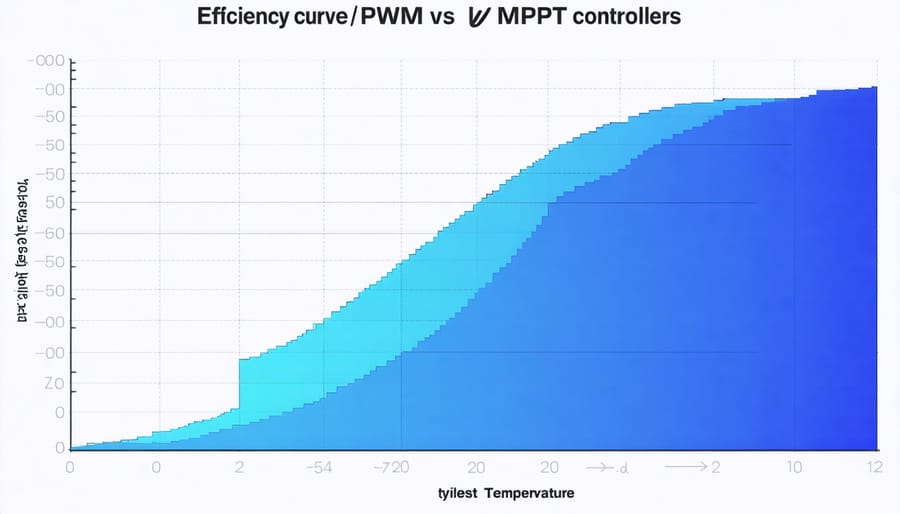
Cost vs. Energy Savings
When comparing PWM and MPPT controllers, the initial cost difference is significant. MPPT controllers typically cost 2-3 times more than PWM controllers, which can impact your solar panel installation costs. However, the long-term energy savings often justify the higher upfront investment for MPPT controllers.
MPPT controllers can harvest up to 30% more energy from your solar panels compared to PWM controllers, particularly in less-than-ideal conditions like partial shade or cold weather. This increased efficiency translates to faster payback periods and higher overall savings on your electricity bills.
For small systems under 200 watts, the additional cost of an MPPT controller might not be justified by the energy gains. However, for larger residential systems, the enhanced performance of MPPT controllers typically pays for itself within 2-3 years through improved energy harvest and system efficiency.
Consider your climate, system size, and budget when making your choice. In sunny regions with consistent temperatures, a PWM controller might be cost-effective, while variable conditions make MPPT controllers more financially attractive in the long run.
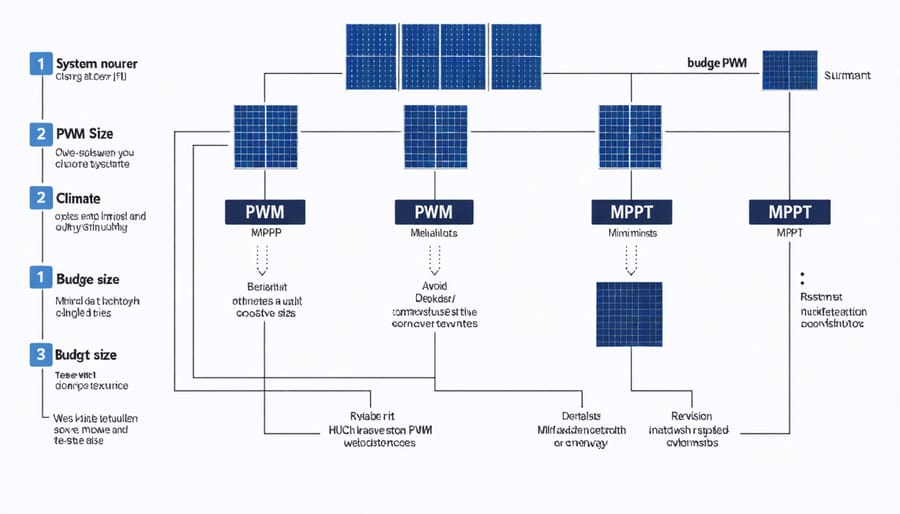
Making the Right Choice for Your Home
When to Choose PWM
PWM controllers are an excellent choice for smaller solar systems and specific scenarios where their simplicity offers clear advantages. They’re ideal for systems where the solar panel voltage closely matches the battery voltage, typically in 12V or 24V setups. If you’re working with a modest budget and have a small-scale installation like a camping setup or garden lighting system, PWM controllers offer reliable performance at a lower cost.
These controllers also make sense in warm climates where panel efficiency isn’t significantly affected by temperature variations. For basic applications where maximum power harvesting isn’t critical, such as maintaining batteries in vacation homes or powering small appliances, PWM controllers provide dependable charging without the added complexity and cost of MPPT technology.
Consider PWM when your solar system’s size and budget align with simpler needs rather than maximum efficiency requirements.
When to Choose MPPT
MPPT controllers are particularly valuable when you have high-voltage solar panels or a system operating in challenging conditions. They’re worth the investment if your solar array’s voltage is significantly higher than your battery voltage, typically in systems over 200 watts. Choose MPPT if you live in an area with frequent temperature fluctuations or partial shading, as these controllers can maintain optimal performance despite these challenges.
The higher cost of MPPT controllers is also justified when power production efficiency is crucial, such as in off-grid homes or when space for solar panels is limited. They’re especially beneficial in cold climates where panel voltage tends to increase, allowing the controller to convert this extra voltage into usable current. For professional installations or larger systems where long-term savings matter more than initial costs, MPPT controllers consistently prove to be the smarter choice.
When choosing between PWM and MPPT solar charge controllers, the decision ultimately comes down to your specific needs and budget. MPPT controllers are the clear winners in terms of efficiency and performance, offering up to 30% more power harvest in challenging conditions. While they come with a higher upfront cost, the additional energy savings often justify the investment, especially in larger systems or areas with variable weather.
For smaller systems under 200 watts or installations in consistently sunny conditions, a PWM controller can be a cost-effective choice. However, for most home solar installations, we recommend investing in an MPPT controller to maximize your system’s potential and ensure better long-term value. Remember that the extra efficiency gains of MPPT technology become even more significant as your solar system grows, making it a future-proof choice for your sustainable energy journey.

